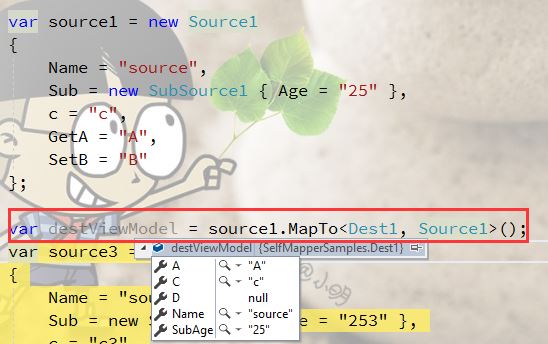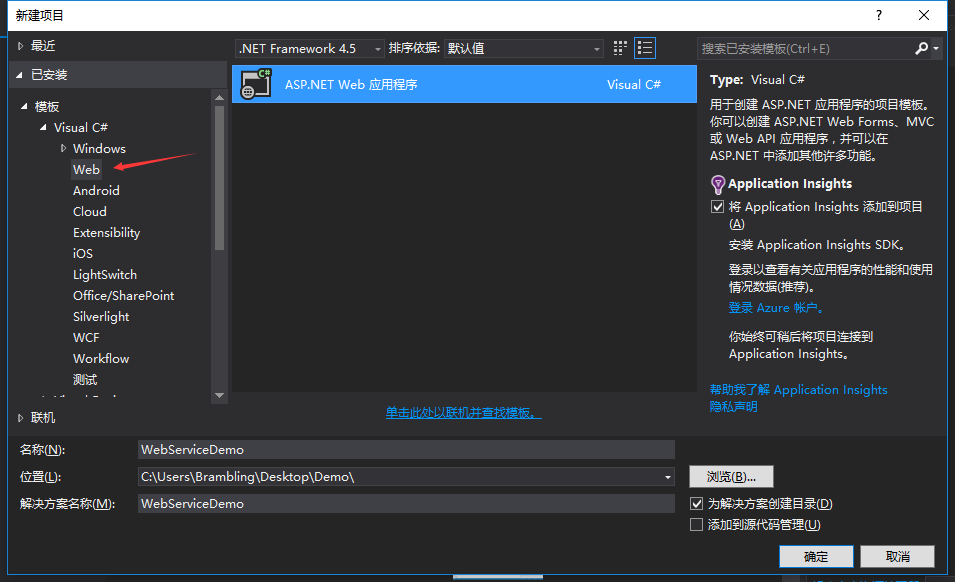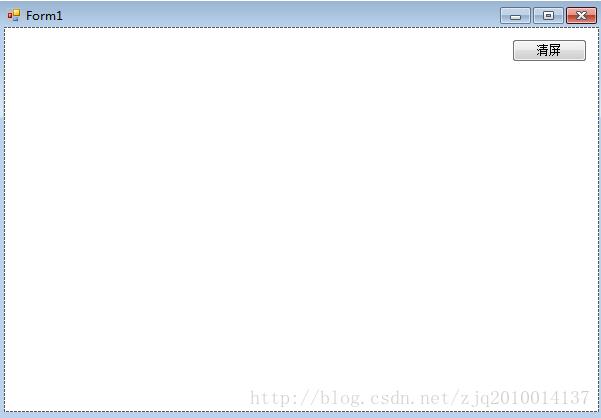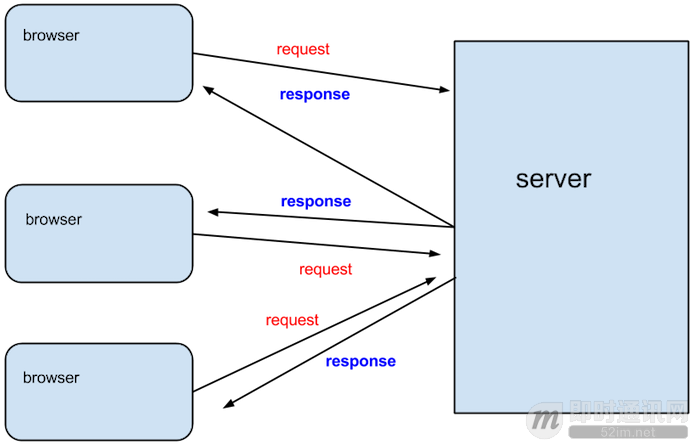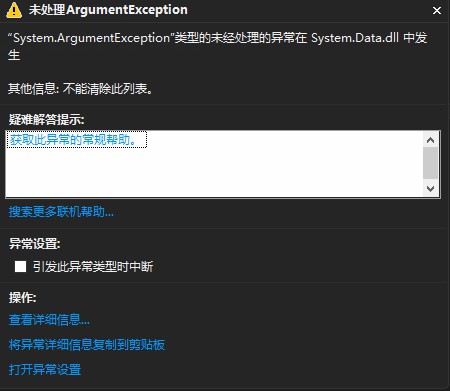这篇文章介绍了C#中多维数组[,]和交错数组[][]的区别,文中通过示例代码介绍的非常详细。对大家的学习或工作具有一定的参考借鉴价值,需要的朋友可以参考下
多维数组的声明
在声明时,必须指定数组的长度,格式为 type [lenght ,lenght ,lengh, ... ]
int [,] test1 = new int [3,3];或声明时即赋值,由系统推断长度
int [,] test1 = {
{1,2,3},
{1,2,3},
{1,2,3},
};交错数组的声明
声明时,至少需要指定第一维的长度,格式为 type [ ] [ ] [ ] ...
int [][] test1 = new int[5][];int [][] test1 = new int[][]; //注意,此的声明方式是错的或者声明时即赋值,由系统推断长度
int [][] test1 = {
new int[] {1,2,3,4},
new int[] {1,2,3},
new int[] {1,2}
};多维数组与交错数组 二者的相同、区别
两者声明时,都必须指定长度,多维数组必须指定每一维的长度,而交错数组需要至少需要指定第一维的长度。
多维数组声明时,符号是这样的 [ , , , , ],逗号在 方括号 [ ] 中,每一维长度用逗号分隔。而交错数组每一维独立在 [ ]中
当你想指定数组长度时,只能在等号右侧指定,int [,] test1 = new int [3,3] 是正确的 ;int [6,4] test1 = new int [6,4] 是错误的;
下面以代码形式说明
大小不一致的多维数组会发生错误
int [,] test1 = {
{1,2,3,4},
{1,2,3},
{1,2}
}; //这样是错的,长度必须一致int [,] test1 = new int [4,5] {
{1,2,3,4,5},
{1,2,3},
{1,2,3}
}; //这样也是错误的,长度必须一致,必须为每一个位置赋值这一点C#与C语言有所区别,C语言可以不全赋值,没有赋值的位置系统默认为0。
下面的方法是正确的
int [,] test1 = {
{1,2,3},
{1,2,3},
{1,2,3}
};初始化交错数组
上面已经说了声明一个交错数组的方法
int [][] test1 = {
new int[] {1,2,3,4}, //new int[4] {1,2,3,4}
new int[] {1,2,3}, //new int[3] {1,2,3}
new int[] {1,2}
};注意,在里面有new int[],这正是交错数组的特性。
交错数组是由数组构成的数组,交错数组要求为内部的每个数组都创建实例。
即交错数组的每一维都是一个实例,每一个实例为一个数组。
数组的长度是固定的
无论多维数组还是交错数组,长度都是固定的,不能随意改变。
获取数组的长度
使用 对象.Length 获取数组的长度,需要注意的是,多维数组的长度是每一维相乘,即元素总个数。
int [,] test1 = {
{1,2,3},
{1,2,3},
{1,2,3}
};
Console.WriteLine(test1.Length);
输出为 9而交错数组的长度则是“内部组成的数组的个数”,例如
int [][] test1 = {
new int[] {1,2,3},
new int[] {1,2,3},
new int[] {1,2,3},
};
Console.WriteLine(test1.Length);
输出为 3方法
多维数组、交错数组的方法无差别,都具有Sort()、Clear()等方法,这里不再赘述,关于数组的高级用法,请查阅
下列为System.Array类的属性
由于系统提供的方法比较多,有兴趣请查阅
https://docs.microsoft.com/zh-cn/dotnet/api/system.array?view=netframework-4.7.2
使用数组初始化类型
在C#中有 lambda、匿名类等等,C# 5.0/6.0 后,给声明类、声明类型类型、赋值等有了很方便的操作方法。下面举例测试。
例子1
使用数组对集合、集合泛型等初始化
声明一个 List 泛型集合
using System.Collections.Generic; //头部引入
//main中的代码
static void Main(string[] args)
{
List<string> list = new List<string>();
Console.ReadKey();
}那么,给集合 list 增加一个项,用 Add() 方法
static void Main(string[] args)
{
List<string> list = new List<string>();
//增加
list.Add("a");
list.Add("b");
list.Add("c");
list.Add("d");
list.Add("e");
list.Add("f");
list.Add("g");
Console.ReadKey();
}利用 “数组” 来添加新项
List<string> list = new List<string>(){"a","b","c","d","e","f"};
List<string> list = new List<string>{"a","b","c","d","e","f"};
//以上两种方法都可以,注意后面有没有 ()例子2
上面的例子利用数组直接在集合声明时初始化,但是不能很好的声明“骚操作”。
试试交错数组
1,在 program类 所在的命名空间中写一个类
public class Test
{
public int x;
public int y;
public void What()
{
Console.WriteLine(x + y);
}
}2,在 Main 方法中
static void Main(string[] args)
{
List<Test> list = new List<Test>()
{
new Test{x=1,y=6},
new Test{x=8,y=6},
new Test{x=4,y=8},
new Test{x=5,y=7},
new Test{x=3,y=3},
new Test{x=6,y=6},
new Test{x=9,y=666},
new Test{x=7,y=6},
};
Console.ReadKey();
}完整代码如下
public class Test
{
public int x;
public int y;
public void What()
{
Console.WriteLine(x + y);
}
}
class Program
{
static void Main(string[] args)
{
List<Test> list = new List<Test>()
{
new Test{x=1,y=6},
new Test{x=8,y=6},
new Test{x=4,y=8},
new Test{x=5,y=7},
new Test{x=3,y=3},
new Test{x=6,y=6},
new Test{x=9,y=666},
new Test{x=7,y=6},
};
Console.ReadKey();
}
}由于类引用类型,它的内存是引用地址,不像 int、char等类型,所以在对类(引用类型)使用数组、集合等形式时,可以用 “交错数组” 来理解。
以上所述是小编给大家介绍的C#中多维数组[,]和交错数组[][]的区别,希望对大家有所帮助。在此也非常感谢大家对得得之家网站的支持!
本文标题为:C#中多维数组[,]和交错数组[][]的区别


- Unity3D实现渐变颜色效果 2023-01-16
- WPF使用DrawingContext实现绘制刻度条 2023-07-04
- user32.dll 函数说明小结 2022-12-26
- c# 模拟线性回归的示例 2023-03-14
- 如何使用C# 捕获进程输出 2023-03-10
- 在C# 8中如何使用默认接口方法详解 2023-03-29
- Unity Shader实现模糊效果 2023-04-27
- .NET CORE DI 依赖注入 2023-09-27
- C# 使用Aspose.Cells 导出Excel的步骤及问题记录 2023-05-16
- Oracle中for循环的使用方法 2023-07-04
